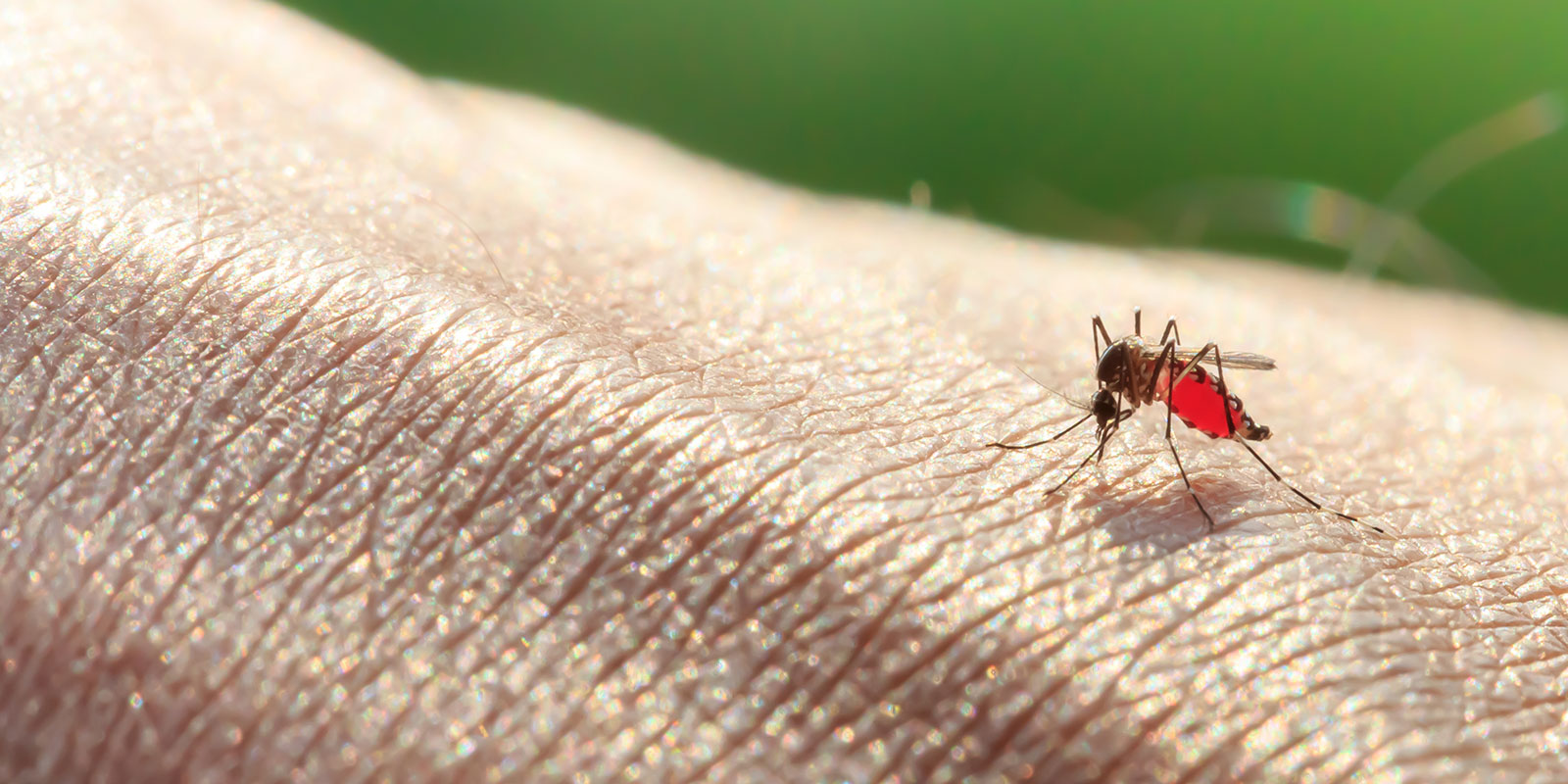Serial Biter? What we know about mosquitoes and how we can stop them from spreading disease
By Dr. Aïssatou Diawara

Did you know that the deadliest animal in the world measures between 3 to 25 millimetres long, has six legs, no teeth and is able to detect its prey, a blood host, over a distance ranging from 6 to 27 meters? We all have encountered this animal and each time we hear it around us we start clapping as if it was a pop star receiving an ovation!
Any guess what this animal is? I am talking about the mosquito. Seven years ago in a blog post, Bill Gates called the mosquito the deadliest animal on earth. This is still relevant today. Mosquitoes are responsible for the transmission of pathogens including parasites, viruses and bacteria that globally cause around 700,000 deaths from diseases such as malaria, dengue, and yellow fever. The highest disease burdens are in tropical and sub-tropical regions among the poorest populations. Malaria alone killed 409,000 people in 2019, two thirds of whom were children under the age of 5. In 2021, too many people are still dying from malaria mosquito bites – every two minutes a child dies from the disease. This number is unacceptably high!
Other diseases transmitted by mosquito bites, such as chikungunya and lymphatic filariasis, cause severe disability and chronic suffering. Lymphatic filariasis is one of the most notable neglected tropical diseases, and in addition to the impact on physical health, often affects a person’s mental health and well-being due to the social stigma that results from physical impairments and disfigurements associated with the disease. Lymphatic filariasis is recognised as one of the leading causes of global disability, with around 40 million infected individuals seriously incapacitated and disfigured by the disease. Among all vector-borne diseases, malaria and lymphatic filariasis account for the largest global burdens of mortality and morbidity, respectively. Can you believe that more than half of the world’s population is at risk of at least one of these diseases?
How could such tiny beings be so harmful? It is important to clarify that mosquitoes themselves are not the cause of disease, but their bite can transmit deadly agents of disease. Female mosquitoes are the only ones that bite because they need to feed on blood to develop their eggs. Unfortunately, if that same mosquito is carrying a human-infecting pathogen such as Plasmodium or a filarial nematode, which are the agents that cause malaria and lymphatic filariasis, respectively, the pathogen is transmitted during the mosquito’s blood meal. The real threat of mosquitoes is their role as disease vectors. Mosquito-borne diseases have a significant impact on the health and economy of populations in endemic countries.
What do we really know about these culprits? There are more than 3,500 species of mosquitoes in the world, classified into 41 genera. Mosquito species that transmit Plasmodium malaria belong to the genus Anopheles, and among Anopheles, 40 are known to be vectors of malaria. Filarial parasites that cause lymphatic filariasis are transmitted by members of Anopheles, Culex, Aedes and Mansonia genera of mosquitoes. The Culex mosquito is the most common vector of lymphatic filariasis in Asia, eastern Africa, and the Americas, while the Anopheles mosquito, which is also the vector of malaria, is widespread in West Africa. The distribution of mosquito vectors varies according to geographical locations and are influenced significantly by climate factors, primarily temperature and precipitation patterns.
To control mosquitoes and reduce the public health burden of malaria and lymphatic filariasis, vector-based interventions are deployed in endemic countries. In areas where lymphatic filariasis and malaria are co-endemic, the World Health Organization recommends integrated-vector management to align vector control efforts and improve the cost-effectiveness of the interventions, as malaria vector control interventions have a direct impact on mosquito species that transmit lymphatic filariasis. One key strategy is to prevent mosquitoes from feeding on humans by using insecticide-treated nets and indoor residual spraying. Innovative technologies using engineered mosquitoes are emerging as potential vector control approaches. These technologies are mainly based on sterile insect techniques that prevent the production of viable mosquito offspring and gene drive technology that consists of a genetic modification designed to spread rapidly through mosquito populations. Vector control significantly reduces the intensity of disease transmission and thus contributes to accelerate progress towards elimination and eradication of lymphatic filariasis and malaria. Here at GLIDE, we support activities that play an essential role in disease elimination and eradication.
To finish on a positive note and to reconcile everyone with mosquitoes I would like to note that beyond spreading diseases to humans and being annoying bloodsuckers, mosquitoes play a major role in the ecosystem – ranging from pollination to biomass transfer. It is therefore important to apply mosquito control strategies that reduce their role as vectors of disease, but also protect their ecosystem functions. As research progresses, we are learning more about transmission by understanding the genetics of the pathogens in question, which helps to develop targeted strategies for prevention and treatment. And, there is an exciting new development in malaria prevention – the development of an mRNA vaccine for malaria, which may be a complete game changer in the journey towards elimination. So, even though we may have to continue to live with mosquitoes buzzing around us, we may soon be able to do so without the fear of getting sick.

Dr. Aïssatou Diawara is a Technical Advisor at GLIDE with a keen interest in operational research for the control and elimination of neglected tropical diseases (NTDs). She holds a Ph.D. in parasitology from McGill University and a Master of Public Health from the London School of Hygiene and Tropical Medicine.
Twitter handles: @Aiss_Di, @GLIDE_AE